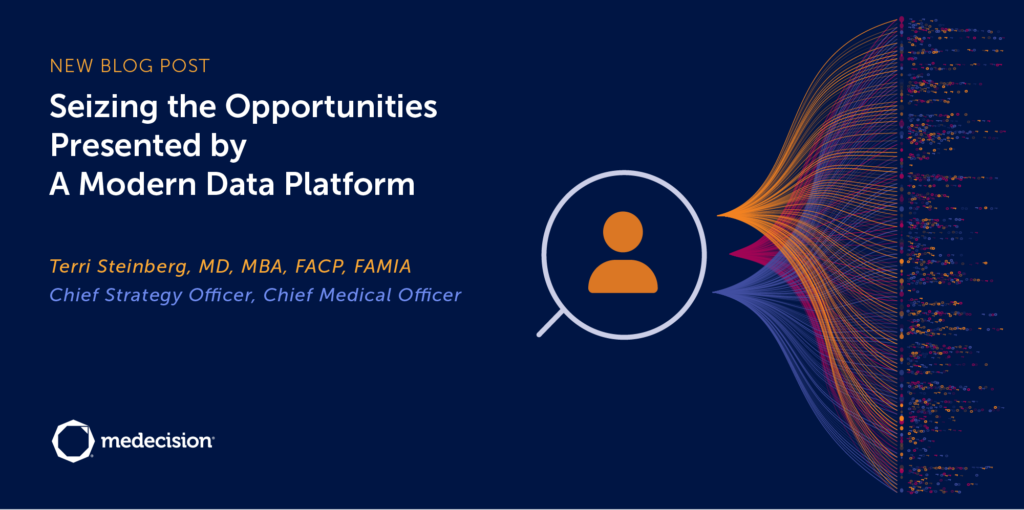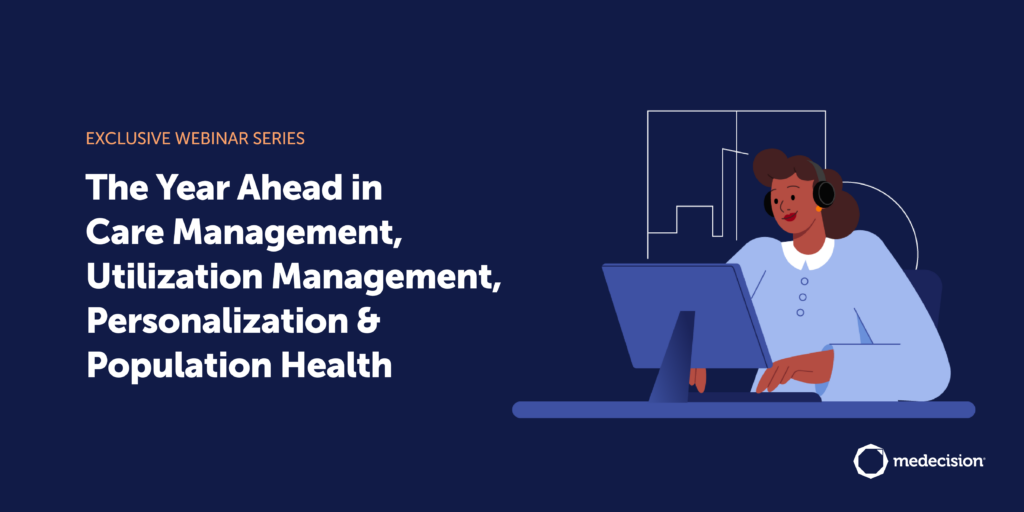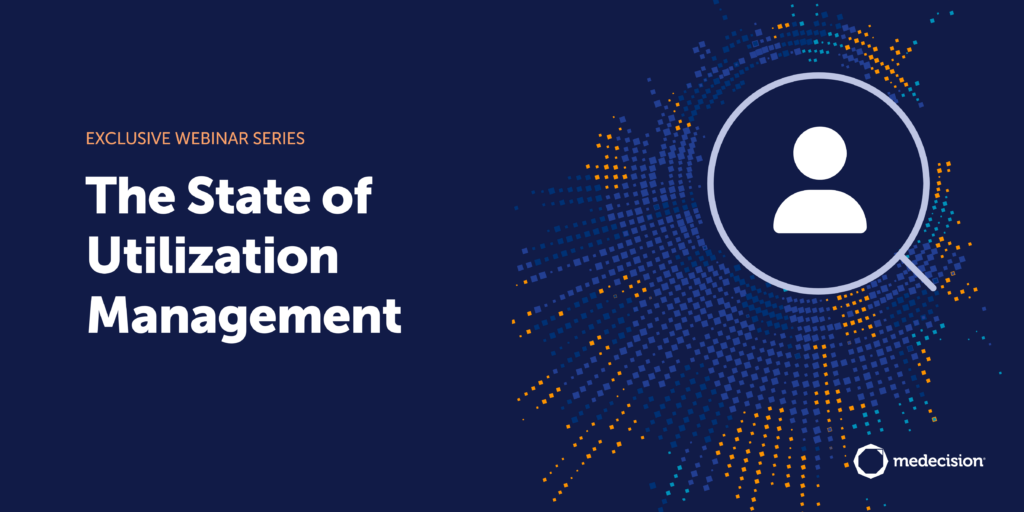
By Terri Steinberg, Chief Medical Officer and Chief Strategy Officer, Medecision
Every IT vendor supporting the health care industry claims to offer a data platform, but what that means varies widely. Just how a data platform can be used varies widely as well. In subsequent posts we’ll look at specific examples of how a data platform can add value in specific health care settings. We’ll start, though, by looking at the state of the modern data platform and considering how it has evolved in ways that are particularly beneficial to the health care ecosystem.
The old school data platform: the data warehouse
Old school data platforms, once known as data warehouses, were vast repositories of nearly static data. IT teams would regularly import data from other systems (one belonging to an pharmacy benefits management provider, for example) to ensure that your personnel had easy access to data from the PBM vendor. Regularly, though, usually meant monthly, so while your personnel could gather the “latest” information about a patient’s benefits from the data warehouse, that information might not always be as current as you would like.
Nor was the currency of data the only challenge present in such configurations. Before any external data could be ingested into such a platform, the IT teams needed to map and transform the data from that external PBM system into a format that your data warehouse would recognize. That could involve a considerable investment of time and effort, and the investment had to be made for each system providing data to that data warehouse.
Yes, all these challenges were expensive and time-consuming, but at the time this approach was the best option at hand. Your personnel and workflow systems had access to as much data as could be captured.
The advantages of a modern data platform
Today’s modern data platforms, though, make all this look archaic. A modern data platform can act as a portal through which data can be accessed, but that data doesn’t always need to reside on the platform. The request for information about pharmacy benefits, for instance, may pass through the data platform and pull up-to-the-minute information from the external PBM system itself. All the data platform holds is a pointer to an application programming interface (API) though which the external data on the vendor’s system can be accessed.
If you do choose to house externally-sourced data on your data platform, the fact that you don’t need to transform that data any longer means that you can ingest data as frequently as makes sense. It simply takes no time to onboard updated records. Instead of updating the data from an external provider’s system on a monthly basis, you could update on a weekly or daily basis, ensuring that your personnel and workflows always have access to the latest available information.
The elimination of this need to map and transform data also means that you can incorporate new data sources much more easily and quickly, which in turn enables you to add new services designed to support your providers and patients. A new external service might become available to deliver food or medicines to home-bound patients or provide transportation services to those who cannot drive, and with a modern data platform it becomes easy to integrate those vendors’ offerings into your workflow system. Your care managers and practitioners can easily discover and take advantage of services and even see updates in real time as food and medicine are delivered or patients are picked up for their appointments.
Passive becomes active
Modern data platforms are no longer passive repositories of data. They can support real-time analytics that facilitate population segmentation; they can trigger alerts and workflow events based on rules and conditions. They can support your efforts to use machine learning (ML) and artificial intelligence (AI) to provide better services and greater insights to practitioners, patients, and planners. In my next post, I’ll describe some of these scenarios in greater detail.
With a modern data platform, your ability to identify and respond to opportunities to provide better care increases far beyond what was possible using old school data platforms and data warehouses. You can respond and evolve more quickly and effectively, improving health outcomes and increasing the satisfaction of both providers and patients.



About The Author: Terri Steinberg, MD, MBA, FACP, FAMIA
As Medecision's Chief Medical and Strategy Officer, Dr. Terri Steinberg is responsible for enhancing Medecision's analytics, clinical informatics and data intelligence capabilities. Dr. Steinberg uses her experience to guide Medecision's implementation of clinical systems for its customers to ensure they achieve optimal workflows and value from our software. As a clinician as well as a software designer, Dr. Steinberg has lectured and consulted extensively on methods to ensure successful technology adoption by physicians and nurses, on the positive impact of technology on safe medication practice, and on the use of technology to drive Population Health Management. Dr. Steinberg was previously the Chief Health Information Officer and Vice President of Population Health Informatics at ChristianaCare, a large multi-entity healthcare organization in Delaware.
More posts by Terri Steinberg, MD, MBA, FACP, FAMIA